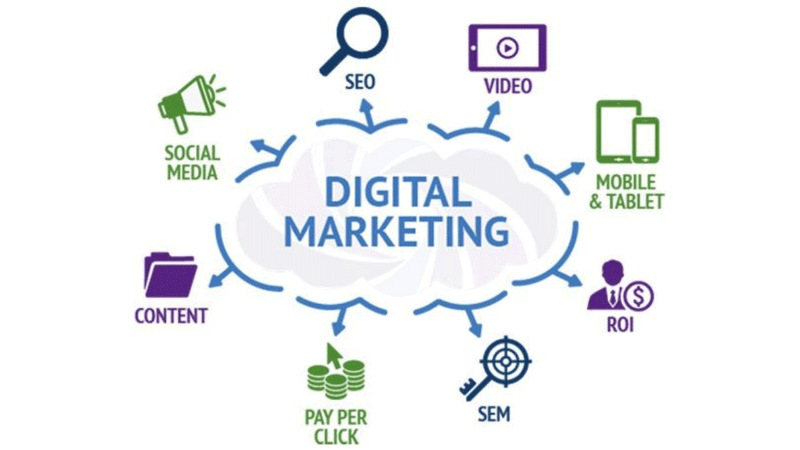Enhance Customer Experience and Drive Website Traffic With Responsive Internet Style
In today's digital landscape, where users are accessing sites from a wide range of gadgets, responsive web design has actually come to be a lot more crucial than ever before. With its capability to adapt and perfectly change to different screen dimensions, receptive style not only improves customer experience yet additionally drives web traffic to your web site.
Why Responsive Website Design Issues
Responsive internet layout is an essential facet of modern-day internet development due to its capability to make sure ideal user experience throughout different devices and display sizes. With the spreading of smart devices, tablet computers, and other mobile phones, it has actually ended up being essential for websites to adapt and provide smooth performance no matter the gadget being used.
The key factor why receptive web layout matters is that it permits individuals to have a delightful and regular searching experience, regardless of the gadget they are using. A receptive site instantly changes its layout, layout, and material components to fit the screen dimension and resolution of the tool, making sure that users can quickly browse and interact with the internet site without any aggravation or irritation.
Moreover, responsive internet design additionally plays a significant role in seo (SEARCH ENGINE OPTIMIZATION) Internet search engine, such as Google, prioritize web sites that are receptive and mobile-friendly in their search outcomes. By incorporating responsive style concepts, web sites can boost their visibility and position, bring about increased organic traffic and possible customers.

Boosting Individual Interaction With Responsive Style
Maximizing user engagement is an essential goal of receptive layout, as it ensures that customers can conveniently gain access to and communicate with website web content on any device. With the boosting use of smart devices and tablets, it is crucial for web sites to adapt to different display sizes and resolutions. Responsive style enables web sites to instantly adjust their design and web content to offer a smooth user experience throughout devices.
One of the primary means responsive design improves customer engagement is by lowering tons times. With a responsive internet site, customers do not have to await separate mobile versions to load, causing faster access to material. This better speed results in greater customer fulfillment and urges them to spend even more time on the website.
In addition, receptive design enhances user interaction by enhancing navigating and interface (The Ad Firm Web Design). When a web site is created responsively, switches and menus are enhanced for touch communications, making it less complicated for customers to connect and browse with the site on their smart phones. This easy to use and user-friendly experience keeps users involved and urges them to check out even more of the internet site
In addition, receptive layout permits far better web content presence and readability. By adjusting the design and typeface dimensions to different tools, receptive internet sites make sure that users can easily understand the web content and check out. This improves customer involvement by minimizing the requirement for scrolling or zooming to review the text.
Increasing Internet Site Web Traffic With Responsive Website Design
With the growing appeal of smart phones, having a web site that is receptive to various display sizes and resolutions is crucial for driving enhanced website traffic. In today's digital landscape, individuals are accessing internet sites from a variety of gadgets such as smartphones, tablets, and desktop computer computers. Each of these devices has different display dimensions and resolutions, and if your site is not created to adjust to these variations, it can result in an inadequate customer experience and a loss of potential web traffic.
Receptive internet layout guarantees that your web site looks and operates ideally across all devices. By utilizing adaptable grids, liquid photos, and media queries, receptive design enables your site to immediately change its web content, layout, and navigation to fit any kind of display dimension. This means that users will certainly have a smooth surfing experience no matter of whether they are making use of a small smartphone or a big desktop computer computer.
Crucial Element of Reliable Responsive Layout
Efficient receptive style incorporates numerous vital aspects that guarantee a smooth individual experience throughout different tools. This enables content to be presented in a readable and aesthetically appealing fashion on any gadget.
Another important component is media queries. These enable designers to apply various styles and designs based upon the attributes of the user's gadget, such as display size and alignment. By using media questions, developers can enhance the discussion of material for each gadget, guaranteeing that it is legible and conveniently accessible.
Receptive pictures are additionally essential in The Ad Firm Carlsbad efficient receptive design. Images that are as well huge can decrease page load times on mobile devices, while pictures that are also little may appear pixelated on larger displays. By utilizing techniques such as responsive picture resizing and careless loading, developers can guarantee that images are properly sized and enhanced for each and every tool.
Lastly, effective responsive style includes a mobile-first technique. This means prioritizing and developing material for mobile tools initially, and afterwards increasing and enhancing the design for bigger screens. This technique makes certain that one of the most important content is easily accessible on smaller displays, while still giving an abundant experience on bigger gadgets.
Finest Practices for Carrying Out Responsive Website Design
Executing responsive internet layout calls for cautious consideration of various best techniques to make certain an optimal individual experience across different tools. When applying receptive web design., below are some crucial finest practices to adhere to.
First of all, it is important to prioritize mobile individuals. With the enhancing prominence of smart phones, creating for mobile-first has become crucial. Begin by developing for smaller sized displays and afterwards gradually boost the design for larger displays.

One more essential best practice is to maximize photos for different screen resolutions. Huge photos can reduce the packing time of your site, especially on mobile phones with slower links. Use receptive pictures that can be resized based on the device's display resolution to enhance efficiency.
In addition, test your web site on different devices and screen dimensions to ensure a smooth and constant experience. There are various screening tools available that can aid you recognize any type of issues and make essential modifications.
Lastly, focus on functionality and accessibility. Make certain that your website is simple to navigate, with clear and concise content. Make certain that your site is accessible to people with impairments and follows access guidelines.
Verdict
To conclude, receptive website design plays an important duty in improving customer experience and driving web traffic to internet sites. By taking on responsive style concepts, sites can make sure ideal viewing experiences throughout various gadgets, leading to enhanced customer engagement (seo Carlsbad). Responsive style can additionally add to greater website traffic as it enhances search engine rankings and facilitates simple sharing of material. Companies ought to focus on executing the crucial components and ideal techniques of receptive style to successfully satisfy the demands of modern users.
Enhancing individual engagement is a key objective of responsive design, as it makes certain that individuals can easily accessibility and engage with site content on any tool. Responsive design makes it possible for sites to automatically readjust their design and web content to supply a seamless user experience throughout gadgets.
In addition, responsive layout improves user interaction by improving navigating and user interface.Receptive pictures are additionally important in effective receptive layout. By embracing receptive design concepts, websites can ensure ideal viewing experiences across various devices, leading to boosted user interaction.